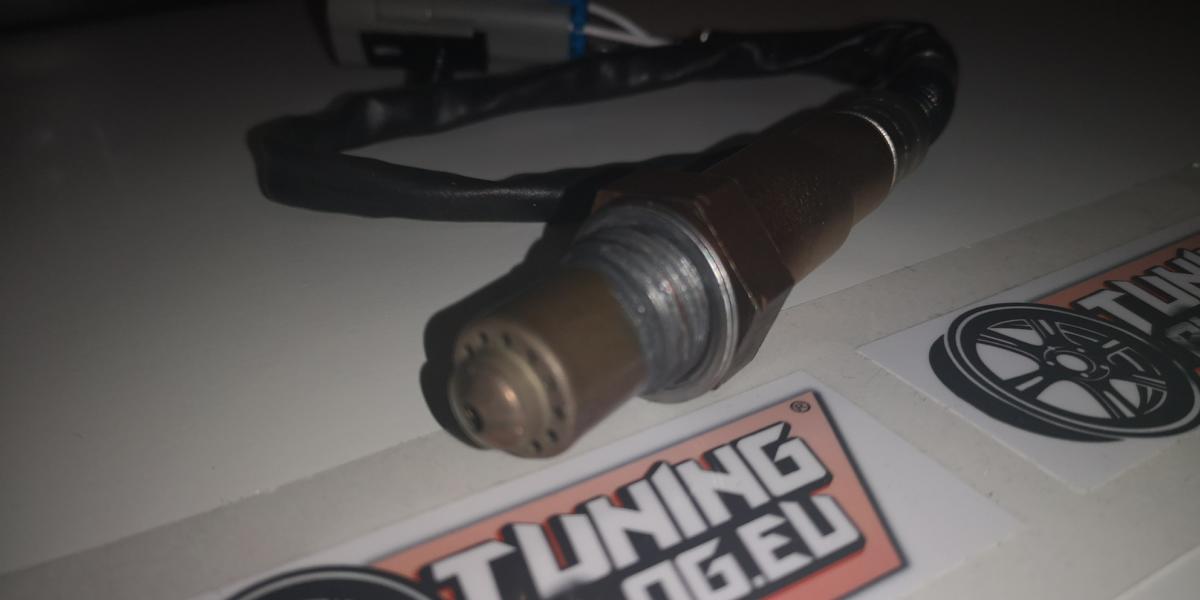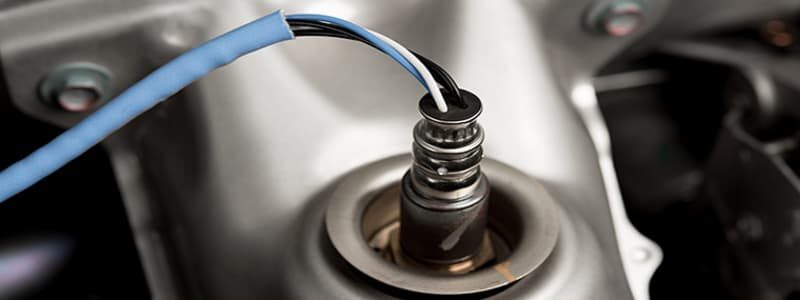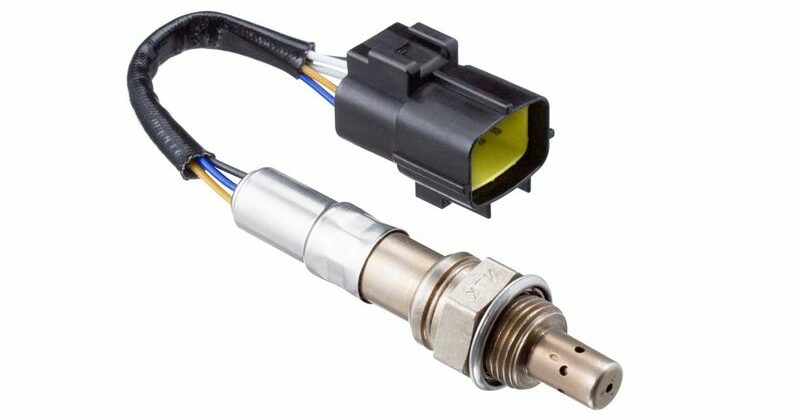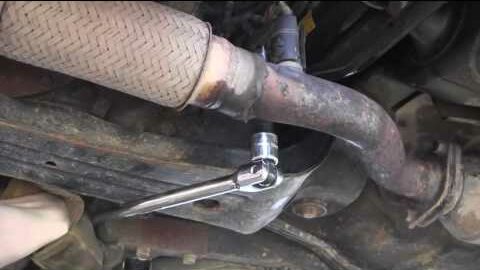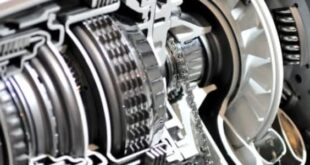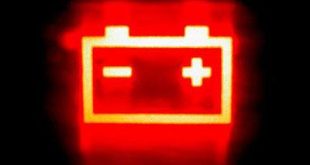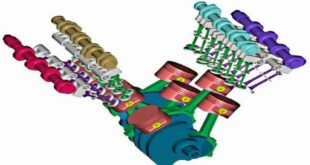Recently updated on January 27, 2022 at 10:36 am
We have you at the beginning of January in a short report some information about the lambda probe send. And today we want to go to the Problems that can exist with the lambda probe and bring you a little closer to the topic. The lambda probe is there to reduce the pollutant emissions of an engine as much as possible. If the lambda probe is now defective, however, fuel consumption can increase and the engine no longer provides full power. The task of the lambda probe, which is located in the exhaust, is to determine the oxygen content in the exhaust gas. With the help of these determined values, the engine management system can regulate the fuel-air mixture accordingly, which results in the Catalyst can provide the most efficient cleaning performance. For this reason, the lambda probe is also called Regulating probe. In addition to the conventional lambda probe, a large number of vehicles also need another lambda probe, the Diagnostic probe, installed behind the catalytic converter and controls the exhaust gas values, although it does not affect the engine management. Unfortunately, the lambda probe can also be a source of error. In the following article we would like to go into more detail about the exact tasks, the function and the defects that can occur.
Overview of the topics
 Who is only interested in very specific areas around the topic defective lambda probe interested, you can use the following jump labels to navigate directly to the desired topic with just one click. And just as quickly you can return to this overview from the selected menu item with just one click. However, we recommend our readers to always read the entire article. Some menu items are only really comprehensible and understandable once the complete information article has been read.
Who is only interested in very specific areas around the topic defective lambda probe interested, you can use the following jump labels to navigate directly to the desired topic with just one click. And just as quickly you can return to this overview from the selected menu item with just one click. However, we recommend our readers to always read the entire article. Some menu items are only really comprehensible and understandable once the complete information article has been read.
- What are the tasks of the lambda probe?
- How does the lambda probe work?
- Jump and broadband probes
- Jump probes
- Broadband probes
- How is a defective lambda probe noticeable?
- Replacing the lambda probe
- What does a lambda probe cost?
- summarizing the information about the lambda probe
- Tutorials: the replacement of the lambda probe
What are the tasks of the lambda probe?
The lambda probe has been installed in gasoline engines since the late 70s. Only this device made it possible to use a regulated catalytic converter - provided that unleaded petrol was used. The lambda probe enables the engine electronics to calculate the oxygen content in the exhaust gas. This allows the fuel-air mixture to be adjusted, which is controlled by the injection duration Injectors is accomplished. In the exhaust gas itself, the oxygen content should ideally zero percent otherwise the catalytic converter can no longer properly reduce toxic nitrogen oxides to nitrogen. Incidentally, nowadays there is no longer a gasoline engine that does not have a lambda probe.
Since the beginning of the 2000s, the lambda probe has also been increasingly installed in diesel engines with the aim of being able to comply with the prescribed emission values. Another advantage of using lambda sensors in diesel engines is that they reduce the susceptibility to defects. This is because the harmful burns that occur, for example in the Overrun comes, recognized and switched off. Incidentally, the so-called NOX storage catalytic converters are also monitored by the lambda probe. The lambda probe provides data that are important for controlling the catalytic converter, the regulation of which must take place at intervals so that the storage effect can be maintained. (Back to overview)
How does the lambda probe work?
The fuel-air ratio is defined via what is known as the lambda value, with the desired reference value one amounts. One speaks here of the stoichiometric equilibrium. In this context one speaks of the "Lambda window" (Value is between 0,97 and 1,03). If this value is given, then the exact amount of oxygen that is required for the combustion of the entire fuel is given. The amount that is required for one kilogram of 95 octane premium gasoline is 14,7 kilograms of air. If the oxygen percentage is higher, one speaks of a lean mixturewhile one with an excess of fuel from one rich mixture speaks. If the lambda value is within the lambda window, the catalytic converter is able to provide maximum cleaning performance.
With a lambda value of 0,85, i.e. a rich mixture, the engine reaches its maximum possible torque. For this reason, the lambda value is not always within the lambda window - for example during an acceleration process. diesel engines however, work with a mixture whose lambda value is between 1,3 and 6 lies. In addition, the lambda probe in diesel engines has no direct influence on the amount of fuel that is injected - here the lambda probe influences that AGR valvewhich ultimately regulates the fuel mixture via the exhaust gas recirculation rate. (Back to overview)
Jump and broadband probes
There are basically two different versions of lambda sensors: The so-called Jump probes and the Broadband probes, the latter being the more recent variant. (Back to overview)
Jump probes
Jump sensors are also called binary lambda sensors. With such probes, the signal of the respective probes jumps back and forth between two different values. The jump probes can be divided into two further subgroups: Zirconia probes and Titanium dioxide probes. As for the shape, both are in the shape of a finger and they are hollow. In the case of zirconium dioxide probes, the outside of the probe is in the exhaust gas flow, while the inside is in contact with the ambient air. This is also referred to as the so-called reference gas. In between there is a zirconium dioxide-based solid electrolyte, which is able to conduct oxygen ions from a temperature of 300 degrees, which in turn migrate towards the exhaust gas so that the different concentrations of oxygen between the exhaust gas and the outside air are balanced.
During this time, an electrical voltage is generated on the platinum electrodes surrounding the zirconium dioxide. This electrical voltage is the so-called output signal that is passed on to the control unit. If the mixture is lean, i.e. there is a high oxygen content in the exhaust gas, a voltage of less than 0,2 volts can be measured. With a rich mixture, i.e. a high proportion of fuel in the exhaust gas, a voltage of over 0,8 volts can be measured. If we now relate this to the optimal lambda value 1, the voltage is around 0,45 volts. This means that the zirconium dioxide probe is only able to check whether a mixture is too lean or too rich or whether it is in the ideal range.
This also applies to the titanium dioxide probe, but these two differ considerably from the zirconium dioxide probe. In contrast to the zirconium dioxide probe, the solid electrolyte in the titanium dioxide probe does not consist of zirconium dioxide, but of titanium dioxide. In addition, the electrical resistance changes proportionally to the oxygen content of the exhaust gas and the reduction in conductivity in the lambda window takes place suddenly. Therefore, the information about the operating state of the engine is provided via the measured resistance. In contrast to the zirconium dioxide probe, the titanium dioxide probe does not generate its own voltage. Furthermore, no ambient air is required here as a reference gas so that the oxygen content in the exhaust gas can be determined. Because of this, the titanium dioxide probe is overall more compact than the zirconium dioxide probe. One disadvantage is that a titanium dioxide probe has to be heated in order for it to reach an operating temperature of 700 degrees. Nowadays, jump probes are no longer used in series production. (Back to overview)
Broadband probes
With broadband probes, compared to jump probes, a significantly more differentiated determination of the mixture composition is possible. For this reason, they are also used in modern gasoline and diesel engines, since here an exact regulation of the ratio between fuel and air outside the lambda window is necessary. Gasoline direct injection engines, for example, are deliberately operated lean in the partial load range so that fuel is saved. In contrast, diesel engines require a rich mixture so that the NOX storage catalytic converter can regenerate itself regularly. The broadband probes are capable of obtaining lambda values from 0,6, i.e. a very rich mixture, to determine and everything about it practically goes to infinity. A broadband probe has a more complex structure than a jump probe: The components of such a probe are two cells - a measuring cell and a pump cell. The oxygen content in the exhaust gas is determined in the measuring cell. If this percentage of oxygen now deviates from the reference value, it is the task of the pump cell to pump oxygen ions into the measuring cell. Incidentally, the pump current that is required for this is the measured variable that determines the exact lambda value that the mixture has. (Back to overview)
How is a defective lambda probe noticeable?
The lambda probe is a wear part that has to be replaced after a while, for which there are some signs. Sometimes, however, it also happens that the lambda probe is defective prematurely. This can be caused, for example, by driving short distances or by a faster chemical aging process. In rare cases, a defective lambda probe can also indicate another major damage to the engine. Another reason for a defect are poor ground connections or cable connections that have been interrupted.
There are several symptoms that indicate a defective lambda probe, whereby the important thing here is whether the control probe, which is installed in front of the catalytic converter, or the diagnostic probe, which is installed behind the catalytic converter, is defective. If the diagnostic probe is defective, no direct symptoms are noticeable, because the diagnostic probe is only there to monitor the function of the catalytic converter. In contrast to this, the control probe influences the engine control directly, which is why no more correct measured values are sent to it if the control probe is defective. As a result, there can be either too much or too little oxygen in the exhaust gas, which is too fat or one to lean Mixture can result. However, these symptoms can also indicate that other components in the engine are defective.
With some engines it can be that a Emergency program activated if the lambda probe is defective or extremely dirty. This emergency program is there to protect both the engine and the environment accordingly. If that program is activated, the usually lights up Engine control lamp and you will also find a corresponding message in the error memory of the on-board diagnosis. Further symptoms that indicate that the lambda probe may be defective are reduced engine performance, poor draft when you accelerate, a jerky engine or combustion misfires, increased fuel consumption, higher exhaust emissions, smoke from the exhaust and that The MKL lamp lights up. (Back to overview)
Replacing the lambda probe
Fortunately, the labor costs for changing the lambda probe are not too high, as the probe is usually very easily accessible in the exhaust system. However, what can be time-consuming is the analysis of the error. If the lambda probe is easily accessible, it can normally be replaced in under 30 minutes. It is important that the exhaust system has cooled down a little before starting work. While the old probe should be unscrewed when it is warm, the new lambda probe should be screwed in when it is cold. If you want to do the work yourself, it is advisable to wear gloves when dismantling, which are heat-resistant and to apply a high-temperature paste to the thread before installation. This paste is there to prevent it from sticking or seizing. In an older vehicle, it can happen that the lambda probe has burned itself into the exhaust, which makes it much more difficult to replace and you should therefore consider replacing the relevant section of the exhaust system. Often the thread of the old probe turns off and the replacement of the corresponding section of the exhaust is unavoidable. (Back to overview)
What does a lambda probe cost?
No matter if you have a new one Regulating probe or a new one Diagnostic probe - the price range for a new probe is between 20 and 180 euros. In addition, however, there are the costs for the analysis and of course the working time. The time that such a change can take is between 30 minutes and 2 hours, which later results in costs of 40 and 250 euros.
In summary, the information about the lambda probe:
- Lambda probe is an oxygen concentration sensor (i.e. an instrument for regulating emissions from gasoline, diesel, gas engines)
- Lambda probe measures the residual oxygen content of the exhaust gas
- Lambda probe ensures an optimal mixture composition
- The control unit recognizes the mixture composition (lean / rich) based on the lambda probe voltage
- if the mixture is too rich, the control unit reduces the amount of fuel in the mixture ratio
- if the mixture is too lean, the control unit increases the amount of fuel in the mixture ratio
- The measured value of the lambda probe enables the control unit to regulate the injection quantity in order to ensure an optimal mixture composition
- possible second lambda probe (diagnostic probe after the catalytic converter), checks whether the control probe (upstream of the catalytic converter) is working optimally
- there are jump probes and broadband probes (Back to overview)
Tutorials: the replacement of the lambda probe
Of course that had not happened yet!
tuningblog has countless other articles on the subject of car and auto tuning in stock. Do you want to see them all? Just click HERE and look around. In part, we would like to provide you with news but also off the tuning. In our category Tips, products, information & Co We have reviews of car or accessories manufacturers, new ones Tuning Wiki Terms or one or the other Leak veröffentlicht. Following an excerpt of the last articles:
"Tuningblog.eu" - we keep you up to date on the subject of car tuning and car styling with our tuning magazine and we present you the latest tuned vehicles from all over the world every day. It's best to subscribe to ours Feed and will automatically be informed as soon as there is something new about this post, and of course also to all other contributions.
 tuningblog.eu Your magazine about tuning the car
tuningblog.eu Your magazine about tuning the car
